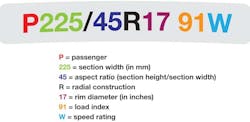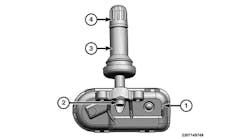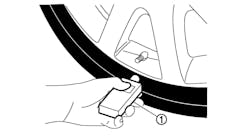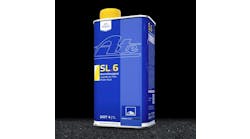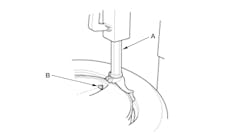A tire doesn’t talk, but it still can tell you a lot about itself, especially its purpose in life. It’s all written on the sidewall.
Consider this a safety primer for the newbies learning how to sell or mount not just high performance tires but any tire. It starts with the tire size (see chart below), which includes the load index and speed rating.
A tire’s section or cross-section width is the measurement of the tire’s width from its inner sidewall to its outer sidewall at the widest point, according to The Tire Rack. The measurement is made after the tire has been properly mounted.
“Because a tire’s section width is influenced by the width of the rim upon which the tire is mounted, the correct industry assigned measuring rim width for the tire size being measured must be used.”
In our example, 225 millimeters converts to 8.8 inches.
The aspect ratio is the section height of the tire divided by its section width. Ultra-high performance tires have particularly low aspect ratios; as such, they are wider and have shorter, stiffer sidewalls.
“Low aspect ratios deliver enhanced performance attributes such as hard cornering and improved handling,” according to Kumho Tire U.S.A. Inc.
The load index indicates the load-carrying capacity of each tire. In our example, 91 represents a load-carrying capacity of 1,356 pounds (see the load index chart on page 34). A set of four would be 5,424 pounds, which needs to take into account both vehicle and passenger weight, as well as possible load weight.
Speed ratings are based on indoor laboratory tests that relate to straightaway performance and durability on the road. They are “not applicable if tires are underinflated, overloaded, worn out, damaged or altered.”
S: maximum of 112 mph.
T: maximum of 118 mph.
H: maximum of 130 mph.
V: maximum of 149 mph.
W: maximum of 168.
Y: maximum of 186 mph.
(Y): in excess of 186 mph.
The old Z-rating refers to speeds in excess of 149 mph. It sometimes appears in the size designation in conjunction with the less open-ended W and Y ratings.
“Tire speed ratings do not imply that a vehicle can be safely driven at the maximum speed for which the tire is rated, particularly under adverse road and weather conditions or if the vehicle has unusual characteristics,” according to the Rubber Manufacturers Association.
In addition, when replacing tires on high performance vehicles, speed ratings “must be equal to or greater than what is specified by the vehicle manufacturer if the speed capability of the vehicle is to be maintained.” ■
See page 34 in the Performance Handbook for a load index and equivalent loads chart. A digital version is available on our homepage.
For more 2013 Performance Handbook articles, see:
Performance tire sales: From 50 years ago to 25 years ago to now
